RESEARCH
Investigating light-matter interaction with THz-MIR light
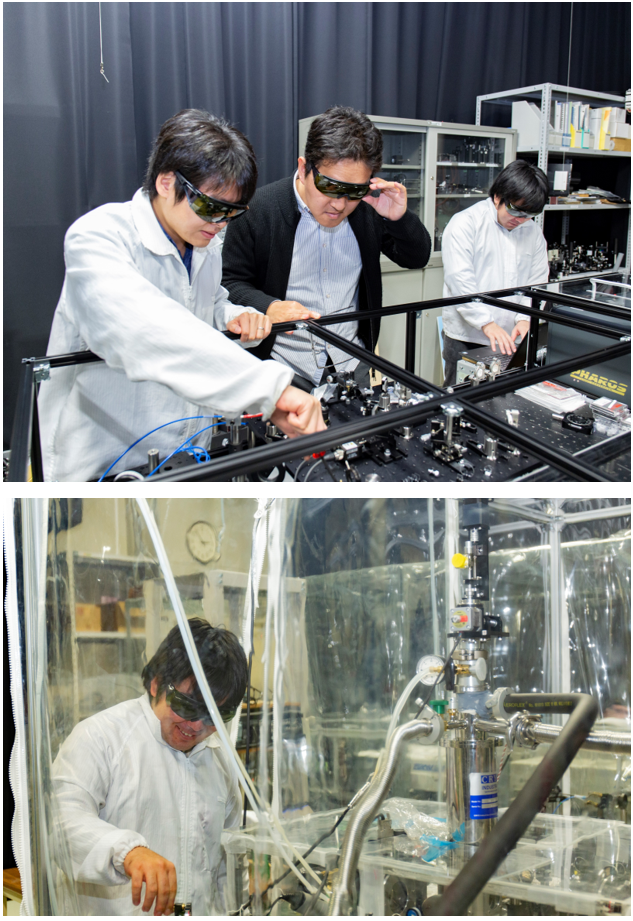
Very exciting ultrafast phenomena in condensed matter have been discovered via light-matter interaction thanks to amazing advances in material science and laser technology over the last few decades. Our research group is interested in (i) utilizing light to investigate fundamental properties of innovative materials, (ii) using light to control material properties, and (ii) using materials to control light.
Because numerous sorts of electromagnetic responses in condensed matter exist in this energy scale (1-100 meV), low-frequency laser pulses in the terahertz (THz) frequency or mid-infrared (MIR) region are essentially relevant. Their short pulse duration of less than 1 picosecond also allows us to use time-resolved spectroscopy to track ultrafast processes in nonequilibrium materials. We are working on nonlinear optics-based THz and MIR light sources and laser techniques, as well as exploring light-matter interaction in a variety of unique materials.
Novel electromagnetic responses in quantum materials
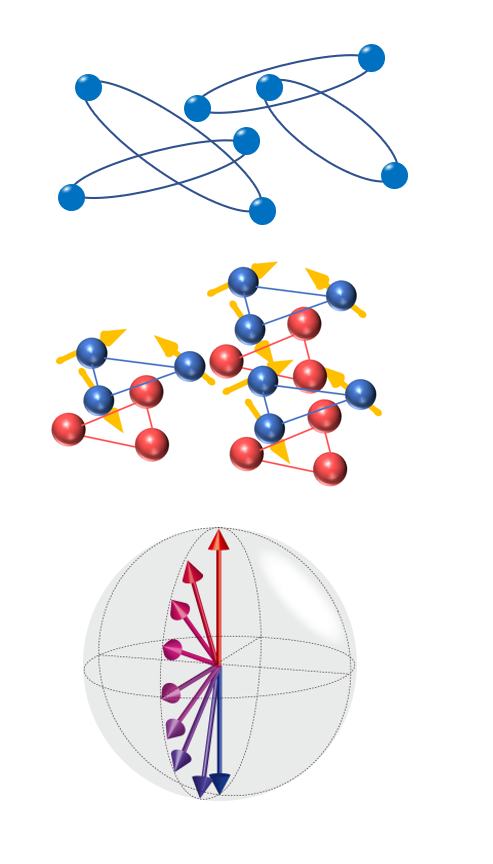
Solid properties are determined by a large number of degrees of freedom, which include charge, lattice distortion, and spins. Many-body interactions between them produce fascinating phases of matter such structural phase transitions, metal-insulator transitions, superconductivity, and magnetism. The spontaneous breaking of "symmetry" is common in these phase transitions, and the symmetry-broken ground states can exhibit surprising responses to external fields, such as infinite conductivity in superconductors. Furthermore, since nontrivial electronic states appear as relativistic massless fermions, current condensed matter physics concerns have been centered on "topology" for material classification. In topological materials, novel response functions strongly related to the geometric (Berry) phase might appear. Our research group is interested in using state-of-the-art ultrafast laser techniques to disclose unexpected electromagnetic responses in quantum materials and to discover their unprecedented functions.
Efficient THz harmonic generation in Dirac semimetal Cd3As2
B. Cheng, N. Kanda, RM et al., Phys. Rev. Lett. 124, 117402 (2020).For attosecond science or high-resolution ARPES, high-harmonic generation, or the production of coherent high-energy photons, has been established in gaseous media. It has recently been reported in solids with near-infrared or mid-infrared pulses, opening up a new field of research for nonperturbative nonlinear light-matter interaction. If high-harmonic generation can be achieved at room temperature at THz frequency, it will be a critical technology for frequency conversion and mixing in high-speed electronics as well as sensitive detection of the cosmic microwave background.
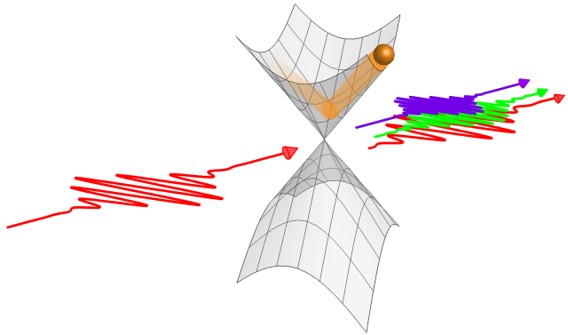
At room temperature, we discovered exceptionally effective THz harmonic production in 3-dimensional Dirac semimetal Cd3As2. Furthermore, we discovered that the exceptional nonlinearity is caused by coherent intraband acceleration of massless Dirac fermions across the Dirac node using subcycle time-resolved THz pump-THz probe spectroscopy. It has been theoretically predicted for more than a decade but has yet to be demonstrated. Our findings shed light on the very nonlinear current of Dirac electrons produced by a THz field under the impact of scattering, paving the way for the development of innovative functional devices for high-speed electronics and photonics using topological semimetals.
THz anomalous Hall effect in Weyl antiferromagnet Mn3Sn
T. Matsuda, RM et al., Nature Commun. 11, 909 (2020).
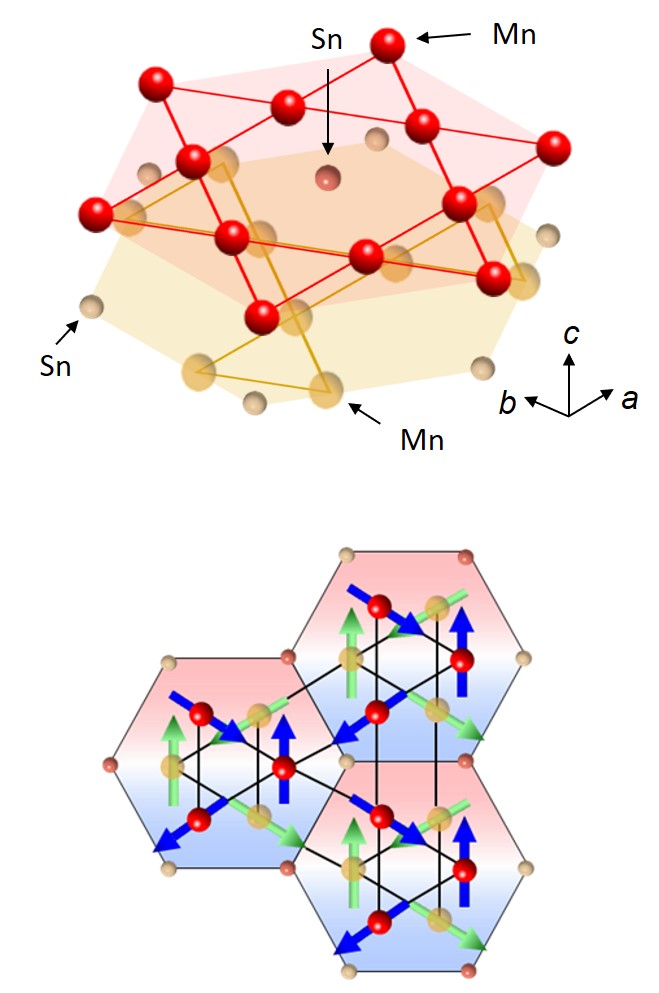
For spintronic devices, controlling magnetism has been a major challenge. Antiferromagnets are promising materials in terms of manipulation speed because spin precession motions occur at THz frequencies, which are a few orders of magnitude greater than ferromagnet frequencies. However, because antiferromagnets are not responsive to external fields, reading out the magnetization information is still difficult, making practical application problematic. Despite the vanishingly small net magnetization, a substantial anomalous Hall effect (AHE) was recently reported in a noncollinear antiferromagnet Mn3Sn that is comparable to ferromagnets. In order to create innovative devices based on fast antiferromagnetic spin motion and huge responsiveness to external field, a thorough study of the dynamical features of AHE in Mn3Sn at the THz frequency is required.
We observed the AHE in Mn3Sn by broadband polarization-resolved THz spectroscopy. Large anomalous Hall conductivity σxy ~ 20 Ω-1 cm-1 at THz frequencies was clearly observed as polarization rotation of light in a non-contact way. It was also discovered that the breaking/recovery of symmetry in the spin texture has a distinctive temperature dependence. The ultrafast readout for antiferromagnetic spintronics is demonstrated by observation of the THz AHE at room temperature. Mn3Sn has also been considered as a plausible candidate for massless Weyl fermions with broken time-reversal symmetry in Weyl (antiferro)magnets. By using ultrafast detection of AHE, we will be able to examine nonequilibrium dynamics in Weyl antiferromagnets.
Collective Higgs amplitude mode in superconductors
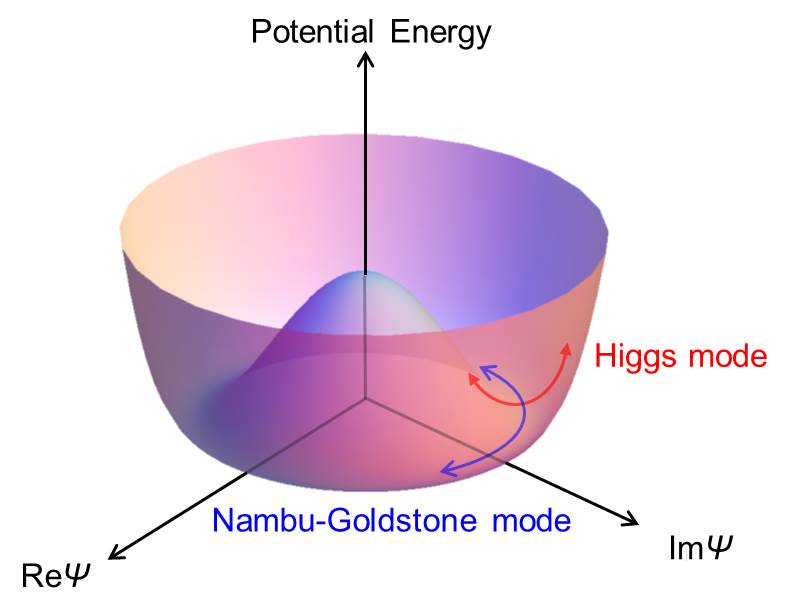
RM and R. Shimano, Phys. Rev. Lett. 109, 187002 (2012).
RM et al., Phys. Rev. Lett. 111, 057002 (2013).
RM et al., Science 354, 1145 (2014).
RM et al., Phys. Rev. B 96, 020505(R) (2017).
K. Katsumi, RM et al., Phys. Rev. Lett. 120, 117001 (2018).
S. Nakamura, RM et al., Phys. Rev. Lett. 122, 257001 (2019).
These experiments have been conducted in Shimano group.
Development of light souce and optical technique
Time-domain spectroscopy with phase-stable THz-to-MIR pulses
Under construction
Intense THz pulse generation and subcycle time-resolved study
THz spectroscopy has only been around for a few decades. The intense THz pulse generating technology, in particular, has advanced significantly, with peak field strengths of up to 1 MV/cm achieved at roughly 1 THz frequency. Such a powerful THz field is now available for tabletop experiments, which has led to research into nonlinear light-matter interactions and the use of an intense low-frequency THz field to control matter.
We have developed a pump-probe spectroscopy system with intense THz pulse generation based on highly-stable Yb-based regenerative amplified laser. It has realized nonlinear transmission spectroscopy to observe THz high-harmonic generation, as well as THz pump-THz probe spectroscopy to observe the carrier dynamics induced by the THz pump. In particular, the sub-cycle time-resolved measurement during the phase-locked THz pump pulse irradiation is essential for ultrafast dynamics in matter driven by the light wave.
See also: B. Cheng, N. Kanda, RM et al., Phys. Rev. Lett. 124, 117402 (2020).
Polarization-resolved THz time-domain spectroscopy
The quantum Hall effect and the anomalous Hall effect have been ones of the central issues in modern condensed matter physics with their topological aspects characterized by the Berry phase. The Hall conductivity is usually measured with DC (static) electric transport, but it can be also measured in non-contact optical means because the Hall conductivity is directly related with the polarization angle of light. When the Hall conductivity is nonzero, the polarization of incident light slightly rotates, which is also known as the Faraday effect. Especially the Faraday rotation in the low-frequency THz regime can be directly connected with the DC Hall effect and also with optical excitation. Therefore, the polarimetry with THz pulses can play important roles for investigating the frequency dependence of the Hall effect, cyclotron resonance, or Landau-level transition with sub-picosecond time resolution.
We have developed polarization-resolved THz time-domain spectroscopy system with high precision of several tens of μrad in the frequency range from 0.5 to 2.0 THz (2 to 8 meV) with 20-min accumulation time. Broadband THz polarimetry up to 6 THz (25 meV) has been also realized in a regenerative amplified laser system for time-resolved study of the THz Hall effect.
See also: T. Matsuda, RM et al., Nature Commun. 11, 909 (2020).